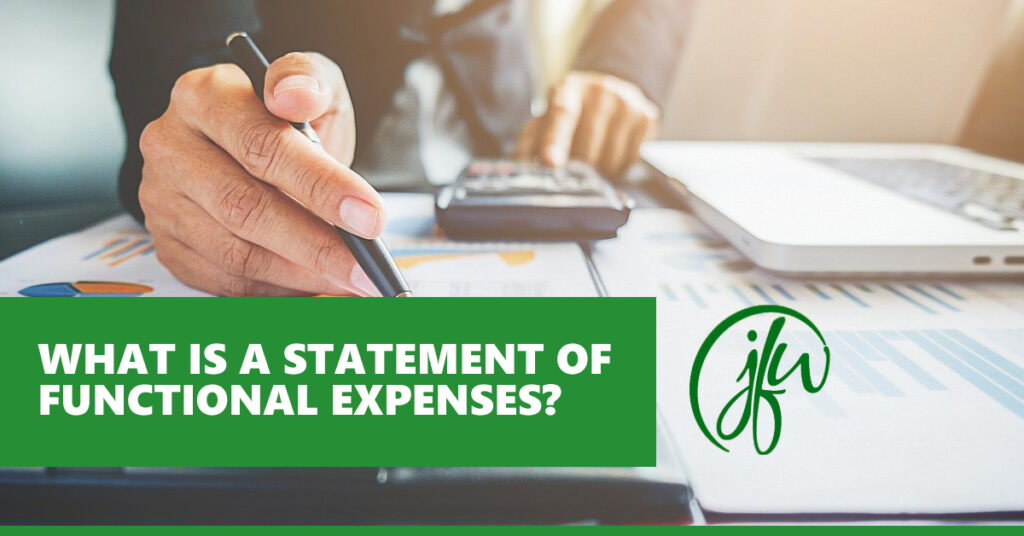Communicating a clear mission and purpose to all stakeholders — including donors, volunteers, and the community you serve — can help your nonprofit deliver a greater impact for your cause. In particular, there is a great way to build credibility, engagement, and support that’s unique to nonprofits: the statement of functional expenses.
The statement of functional expenses is required for you to maintain your tax-exempt status. But it is also one of your best opportunities to demonstrate transparency and accountability, helping to foster and build trust, bolster your organization’s narrative, and attract ambassadors to your cause.
Now that you’re aware of what it can do, it’s time to get back to the fundamentals. What is a statement of functional expenses, exactly?
What Is a Statement of Functional Expenses?
The statement of functional expenses shows how your nonprofit spent the money it was entrusted with in three functional areas:
- Programs: Expenses directly to further your mission
- Management and General: Expenses for your daily operations
- Fundraising: Expenses connected to all fundraising activities and events
The statement of expenses is a matrix. It cross-hatches your functional expenses — money spent on programs, management and general, and fundraising — with natural expenses, which include the following examples:
- Salary and wages
- Rent and utilities
- Insurance
- Fundraising
- Travel expenses
- Repair costs
- Office supplies
- Postage
- Depreciation
You must follow the Financial Accounting Standards Board’s Accounting Standards Codification Topic 958 and generally accepted accounting principles (GAAP). Both these bodies require you to comply with state and federal requirements.
Following these requirements also enables you to provide transparency to contributors and regulators about how you used resources to achieve your organization’s mission. The statement of functional expenses, in terms of dollars and cents, shows what was accomplished (programs) and how (management and general and fundraising).
Functional Expense Allocation
Your accountant demonstrates your “what” and “how” to donors, supporters, the community, and regulators by classifying an expense to its appropriate functional area. This is called functional expense allocation, and it can be done in different ways:
- Square Footage: Allocating an expense by the percentage of office space used for that function
- Headcount: Classifying the expense based on the percentage of people working on a function
- Time Spent: Tracking employees’ time spent working within functions
- Direct Costs: Allocating expenses directly that can only be classified into one function
Functional expense allocation can show all your stakeholders how your support costs relate to your program costs. This provides a roadmap of how their support drives your mission.
The Financial Statements of Nonprofits
The statement of functional expenses is just one of four financial statements required of nonprofit organizations. Here are the other three statements your group must produce:
Statement of Activities
Similar to a for-profit’s income statement, this financial report captures your organization’s revenue and expenses. In doing so, it offers insight into transactions throughout the year. Read more: What is a Statement of Activities for Nonprofits?
Statement of Financial Position
Much like a balance sheet, you can check your organization’s financial health by viewing all the assets and liabilities in one report. Read more: What is a Statement of Financial Position?
Statement of Cash Flow
Just as a for-profit business keeps an eye on its cash flow, your nonprofit must do the same. Your statement of cash flow captures how the functions of your organization generate and use money.
The statement of functional expenses is a financial report specific to nonprofit organizations. It is key to compliance, transparency, budgeting, fundraising, and mission relevance. Also see: How To Prepare a Cash Flow Statement for Your Nonprofit Organization
In Pursuit of Good Accounting and Good Governance
As a nonprofit, you receive your non-profit IRS designation as a 501(c3), 501(c4) or 501(c6) because you promote and serve the public good. By viewing the statement of functional expenses as more than a tax-filing requirement or public relations medium, you can also pursue good governance to improve your mission’s effectiveness.
Understanding how to properly prepare a statement of functional expenses doesn’t just show you how money was spent. It also helps you reflect on and analyze whether you can improve that spending to further your mission.
The statement of functional expenses gives you insight into how well your nonprofit used the money it received from donors or grants. You can see who donated it, what it was used for, and why. You can improve decision-making by reviewing the data in your non-profit accounting software and comparing it to previous years when creating your annual operating budget.
While good governance is a challenge to achieve, the statement of functional expenses provides your nonprofit the chance to push forward the eighth pillar of good governance: being responsive to the present and future needs of society through your mission.

Jo-Anne Williams Barnes, is a Certified Public Accountant (CPA) and Chartered Global Management Accountant (CGMA) holding a Master’s of Science in Accounting (MSA) and a Master’s in Business Administration (MBA). Additionally, she holds a Bachelor of Science (BS) in Accounting from the University of Baltimore and is a seasoned accounting professional with several years of experience in the field of managing financial records for non-profits, small, medium, and large businesses. Jo-Anne is a certified Sage Intacct Accounting and Implementation Specialist, a certified QuickBooks ProAdvisor, an AICPA Not-for-Profit Certificate II holder, and Standard for Excellence Licensed Consultant. Additionally, Jo-Anne is a member of American Institute of Certified Public Accountant (AICPA), Maryland Association of Certified Public Accountants (MACPA), and Greater Washington Society of Certified Public Accountants (GWSCPA) where she continues to keep abreast on the latest industry trends and changes.

